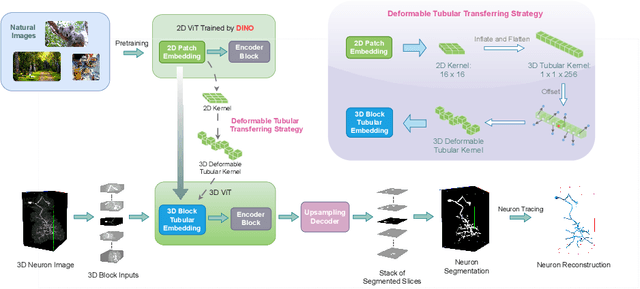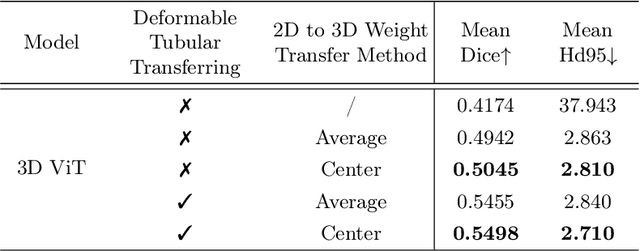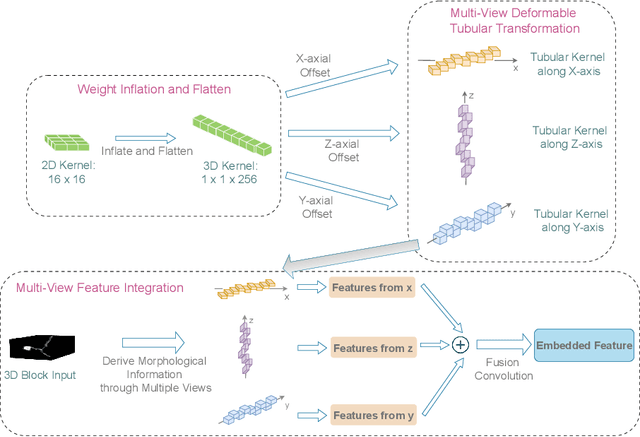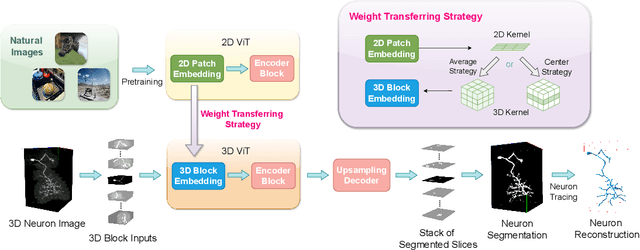Runkai Zhao
Stealthy Patch-Wise Backdoor Attack in 3D Point Cloud via Curvature Awareness
Mar 12, 2025Abstract:Backdoor attacks pose a severe threat to deep neural networks (DNN) by implanting hidden backdoors that can be activated with predefined triggers to manipulate model behaviors maliciously. Existing 3D point cloud backdoor attacks primarily rely on sample-wise global modifications, resulting in suboptimal stealthiness. To address this limitation, we propose Stealthy Patch-Wise Backdoor Attack (SPBA), which employs the first patch-wise trigger for 3D point clouds and restricts perturbations to local regions, significantly enhancing stealthiness. Specifically, SPBA decomposes point clouds into local patches and evaluates their geometric complexity using a curvature-based patch imperceptibility score, ensuring that the trigger remains less perceptible to the human eye by strategically applying it across multiple geometrically complex patches with lower visual sensitivity. By leveraging the Graph Fourier Transform (GFT), SPBA optimizes a patch-wise spectral trigger that perturbs the spectral features of selected patches, enhancing attack effectiveness while preserving the global geometric structure of the point cloud. Extensive experiments on ModelNet40 and ShapeNetPart demonstrate that SPBA consistently achieves an attack success rate (ASR) exceeding 96.5% across different models while achieving state-of-the-art imperceptibility compared to existing backdoor attack methods.
CA-W3D: Leveraging Context-Aware Knowledge for Weakly Supervised Monocular 3D Detection
Mar 06, 2025Abstract:Weakly supervised monocular 3D detection, while less annotation-intensive, often struggles to capture the global context required for reliable 3D reasoning. Conventional label-efficient methods focus on object-centric features, neglecting contextual semantic relationships that are critical in complex scenes. In this work, we propose a Context-Aware Weak Supervision for Monocular 3D object detection, namely CA-W3D, to address this limitation in a two-stage training paradigm. Specifically, we first introduce a pre-training stage employing Region-wise Object Contrastive Matching (ROCM), which aligns regional object embeddings derived from a trainable monocular 3D encoder and a frozen open-vocabulary 2D visual grounding model. This alignment encourages the monocular encoder to discriminate scene-specific attributes and acquire richer contextual knowledge. In the second stage, we incorporate a pseudo-label training process with a Dual-to-One Distillation (D2OD) mechanism, which effectively transfers contextual priors into the monocular encoder while preserving spatial fidelity and maintaining computational efficiency during inference. Extensive experiments conducted on the public KITTI benchmark demonstrate the effectiveness of our approach, surpassing the SoTA method over all metrics, highlighting the importance of contextual-aware knowledge in weakly-supervised monocular 3D detection.
DINeuro: Distilling Knowledge from 2D Natural Images via Deformable Tubular Transferring Strategy for 3D Neuron Reconstruction
Oct 29, 2024



Abstract:Reconstructing neuron morphology from 3D light microscope imaging data is critical to aid neuroscientists in analyzing brain networks and neuroanatomy. With the boost from deep learning techniques, a variety of learning-based segmentation models have been developed to enhance the signal-to-noise ratio of raw neuron images as a pre-processing step in the reconstruction workflow. However, most existing models directly encode the latent representative features of volumetric neuron data but neglect their intrinsic morphological knowledge. To address this limitation, we design a novel framework that distills the prior knowledge from a 2D Vision Transformer pre-trained on extensive 2D natural images to facilitate neuronal morphological learning of our 3D Vision Transformer. To bridge the knowledge gap between the 2D natural image and 3D microscopic morphologic domains, we propose a deformable tubular transferring strategy that adapts the pre-trained 2D natural knowledge to the inherent tubular characteristics of neuronal structure in the latent embedding space. The experimental results on the Janelia dataset of the BigNeuron project demonstrate that our method achieves a segmentation performance improvement of 4.53% in mean Dice and 3.56% in mean 95% Hausdorff distance.
Unleashing the Potential of Mamba: Boosting a LiDAR 3D Sparse Detector by Using Cross-Model Knowledge Distillation
Sep 17, 2024



Abstract:The LiDAR-based 3D object detector that strikes a balance between accuracy and speed is crucial for achieving real-time perception in autonomous driving and robotic navigation systems. To enhance the accuracy of point cloud detection, integrating global context for visual understanding improves the point clouds ability to grasp overall spatial information. However, many existing LiDAR detection models depend on intricate feature transformation and extraction processes, leading to poor real-time performance and high resource consumption, which limits their practical effectiveness. In this work, we propose a Faster LiDAR 3D object detection framework, called FASD, which implements heterogeneous model distillation by adaptively uniform cross-model voxel features. We aim to distill the transformer's capacity for high-performance sequence modeling into Mamba models with low FLOPs, achieving a significant improvement in accuracy through knowledge transfer. Specifically, Dynamic Voxel Group and Adaptive Attention strategies are integrated into the sparse backbone, creating a robust teacher model with scale-adaptive attention for effective global visual context modeling. Following feature alignment with the Adapter, we transfer knowledge from the Transformer to the Mamba through latent space feature supervision and span-head distillation, resulting in improved performance and an efficient student model. We evaluated the framework on the Waymo and nuScenes datasets, achieving a 4x reduction in resource consumption and a 1-2\% performance improvement over the current SoTA methods.
Future Does Matter: Boosting 3D Object Detection with Temporal Motion Estimation in Point Cloud Sequences
Sep 06, 2024Abstract:Accurate and robust LiDAR 3D object detection is essential for comprehensive scene understanding in autonomous driving. Despite its importance, LiDAR detection performance is limited by inherent constraints of point cloud data, particularly under conditions of extended distances and occlusions. Recently, temporal aggregation has been proven to significantly enhance detection accuracy by fusing multi-frame viewpoint information and enriching the spatial representation of objects. In this work, we introduce a novel LiDAR 3D object detection framework, namely LiSTM, to facilitate spatial-temporal feature learning with cross-frame motion forecasting information. We aim to improve the spatial-temporal interpretation capabilities of the LiDAR detector by incorporating a dynamic prior, generated from a non-learnable motion estimation model. Specifically, Motion-Guided Feature Aggregation (MGFA) is proposed to utilize the object trajectory from previous and future motion states to model spatial-temporal correlations into gaussian heatmap over a driving sequence. This motion-based heatmap then guides the temporal feature fusion, enriching the proposed object features. Moreover, we design a Dual Correlation Weighting Module (DCWM) that effectively facilitates the interaction between past and prospective frames through scene- and channel-wise feature abstraction. In the end, a cascade cross-attention-based decoder is employed to refine the 3D prediction. We have conducted experiments on the Waymo and nuScenes datasets to demonstrate that the proposed framework achieves superior 3D detection performance with effective spatial-temporal feature learning.
Boosting 3D Neuron Segmentation with 2D Vision Transformer Pre-trained on Natural Images
May 04, 2024

Abstract:Neuron reconstruction, one of the fundamental tasks in neuroscience, rebuilds neuronal morphology from 3D light microscope imaging data. It plays a critical role in analyzing the structure-function relationship of neurons in the nervous system. However, due to the scarcity of neuron datasets and high-quality SWC annotations, it is still challenging to develop robust segmentation methods for single neuron reconstruction. To address this limitation, we aim to distill the consensus knowledge from massive natural image data to aid the segmentation model in learning the complex neuron structures. Specifically, in this work, we propose a novel training paradigm that leverages a 2D Vision Transformer model pre-trained on large-scale natural images to initialize our Transformer-based 3D neuron segmentation model with a tailored 2D-to-3D weight transferring strategy. Our method builds a knowledge sharing connection between the abundant natural and the scarce neuron image domains to improve the 3D neuron segmentation ability in a data-efficiency manner. Evaluated on a popular benchmark, BigNeuron, our method enhances neuron segmentation performance by 8.71% over the model trained from scratch with the same amount of training samples.
Advancements in 3D Lane Detection Using LiDAR Point Clouds: From Data Collection to Model Development
Sep 24, 2023



Abstract:Advanced Driver-Assistance Systems (ADAS) have successfully integrated learning-based techniques into vehicle perception and decision-making. However, their application in 3D lane detection for effective driving environment perception is hindered by the lack of comprehensive LiDAR datasets. The sparse nature of LiDAR point cloud data prevents an efficient manual annotation process. To solve this problem, we present LiSV-3DLane, a large-scale 3D lane dataset that comprises 20k frames of surround-view LiDAR point clouds with enriched semantic annotation. Unlike existing datasets confined to a frontal perspective, LiSV-3DLane provides a full 360-degree spatial panorama around the ego vehicle, capturing complex lane patterns in both urban and highway environments. We leverage the geometric traits of lane lines and the intrinsic spatial attributes of LiDAR data to design a simple yet effective automatic annotation pipeline for generating finer lane labels. To propel future research, we propose a novel LiDAR-based 3D lane detection model, LiLaDet, incorporating the spatial geometry learning of the LiDAR point cloud into Bird's Eye View (BEV) based lane identification. Experimental results indicate that LiLaDet outperforms existing camera- and LiDAR-based approaches in the 3D lane detection task on the K-Lane dataset and our LiSV-3DLane.
PointNeuron: 3D Neuron Reconstruction via Geometry and Topology Learning of Point Clouds
Oct 18, 2022



Abstract:Digital neuron reconstruction from 3D microscopy images is an essential technique for investigating brain connectomics and neuron morphology. Existing reconstruction frameworks use convolution-based segmentation networks to partition the neuron from noisy backgrounds before applying the tracing algorithm. The tracing results are sensitive to the raw image quality and segmentation accuracy. In this paper, we propose a novel framework for 3D neuron reconstruction. Our key idea is to use the geometric representation power of the point cloud to better explore the intrinsic structural information of neurons. Our proposed framework adopts one graph convolutional network to predict the neural skeleton points and another one to produce the connectivity of these points. We finally generate the target SWC file through the interpretation of the predicted point coordinates, radius, and connections. Evaluated on the Janelia-Fly dataset from the BigNeuron project, we show that our framework achieves competitive neuron reconstruction performance. Our geometry and topology learning of point clouds could further benefit 3D medical image analysis, such as cardiac surface reconstruction. Our code is available at https://github.com/RunkaiZhao/PointNeuron.
 Add to Chrome
Add to Chrome Add to Firefox
Add to Firefox Add to Edge
Add to Edge